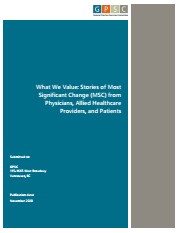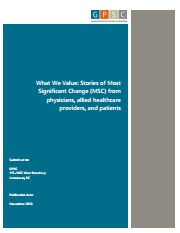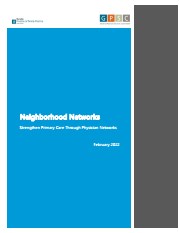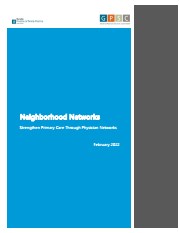6 public records – page 1 of 1. — Log in to view all records
Board Composition and Succession Planning - Webinar Recording
https://www.jcc-resourcecatalogue.ca/en/permalink/divisionresource1162
- Health Authority
- Interior
- Vancouver Coastal
- Division
- Powell River Division of Family Practice
- South Okanagan Similkameen Division of Family Practice
- Published Date
- 2018-08-16
- Description
- "The recording of the Board Composition and Succession Planning webinar."
- Health Authority
- Interior
- Vancouver Coastal
- Division
- Powell River Division of Family Practice
- South Okanagan Similkameen Division of Family Practice
- Corporate Author
- General Practice Services Committee
- Published Date
- 2018-08-16
- Event
- Board Composition and Succession Planning Webinar
- Resource Type
- Audio Recording
- File Type
- MP4
- Originating web page
- https://attendee.gotowebinar.com/recording/8465587916407123970
- Recording Length
- 53mins
- Description
- The recording of the Board Composition and Succession Planning webinar.
What We Value: Stories of Most Significant Change (MSC) from Physicians, Allied Healthcare Providers, and Patients (Executive Summary)
https://www.jcc-resourcecatalogue.ca/en/permalink/divisionresource1565
- Division
- Central Okanagan Division of Family Practice
- Kootenay Boundary Division of Family Practice
- North Peace Division of Family Practice
- North Shore Division of Family Practice
- South Island Division of Family Practice
- South Okanagan Similkameen Division of Family Practice
- Sunshine Coast Division of Family Practice
- Published Date
- 2020-11
- Description
- "The PMH Most Significant Change Evaluation describes the changes that resulted from Patient Medical Home (PMH) strategies such as the implementation of team-based care with allied health professionals (i.e., pharmacists and social workers), and clarifies the values held by different stakeholders in primary care transformation. The executive summary contains priority next steps for system actors (GPSC, Divisions, and FPs) to address."
- Division
- Central Okanagan Division of Family Practice
- Kootenay Boundary Division of Family Practice
- North Peace Division of Family Practice
- North Shore Division of Family Practice
- South Island Division of Family Practice
- South Okanagan Similkameen Division of Family Practice
- Sunshine Coast Division of Family Practice
- Corporate Author
- General Practice Services Committee
- Published Date
- 2020-11
- Resource Type
- Summary
- File Type
- Description
- The PMH Most Significant Change Evaluation describes the changes that resulted from Patient Medical Home (PMH) strategies such as the implementation of team-based care with allied health professionals (i.e., pharmacists and social workers), and clarifies the values held by different stakeholders in primary care transformation. The executive summary contains priority next steps for system actors (GPSC, Divisions, and FPs) to address.
What We Value: Stories of Most Significant Change (MSC) from Physicians, Allied Healthcare Providers, and Patients (Executive Summary)
https://www.jcc-resourcecatalogue.ca/en/permalink/divisionresource1566
- Division
- Central Okanagan Division of Family Practice
- Kootenay Boundary Division of Family Practice
- North Peace Division of Family Practice
- North Shore Division of Family Practice
- South Island Division of Family Practice
- South Okanagan Similkameen Division of Family Practice
- Sunshine Coast Division of Family Practice
- Published Date
- 2020-11
- Description
- "The PMH Most Significant Change Evaluation describes the changes that resulted from Patient Medical Home (PMH) strategies such as the implementation of team-based care with allied health professionals (i.e., pharmacists and social workers). By collecting, sharing, and reflecting on PMH stories from across BC, this project identifies common and different values held by different stakeholder groups in the BC health system."
- Division
- Central Okanagan Division of Family Practice
- Kootenay Boundary Division of Family Practice
- North Peace Division of Family Practice
- North Shore Division of Family Practice
- South Island Division of Family Practice
- South Okanagan Similkameen Division of Family Practice
- Sunshine Coast Division of Family Practice
- Corporate Author
- General Practice Services Committee
- Published Date
- 2020-11
- Resource Type
- Case Study
- File Type
- Description
- The PMH Most Significant Change Evaluation describes the changes that resulted from Patient Medical Home (PMH) strategies such as the implementation of team-based care with allied health professionals (i.e., pharmacists and social workers). By collecting, sharing, and reflecting on PMH stories from across BC, this project identifies common and different values held by different stakeholder groups in the BC health system.
Burnaby DoFP Neighbourhood Networks Case Study - Executive Summary
https://www.jcc-resourcecatalogue.ca/en/permalink/divisionresource1605
- Division
- Burnaby Division of Family Practice
- Published Date
- 2022-02
- Description
- "This document is the executive summary of the Burnaby DoFP Neighbourhood Networks case study. As part of GPSC commitment to the development of physician networks as a key component of primary care system change, the Burnaby DoFP Neighborhood Network case study explores the development and implementation of three neighborhood networks in Burnaby. The creation of neighborhood networks in Burnaby was prompted by family physicians who recognized the need to bring together family physicians from across local communities to increase their interconnectedness, provide opportunities for local Primary Care Network planning, and enable methods for sharing care with each other with the goal of improving patient access to medical care across Burnaby. Burnaby’s neighborhood networks have supported family physicians to connect socially, learn from each other, identify options for locum coverage and after-hours care, and support referrals to specialist care throughout the networks. Key outcomes: family physicians were able to increase patients’ access to care by referring patients to their family physician peers, expanding their use of locums, working on the development of an Urgent and Primary Care Clinic, and procuring additional healthcare resources for the neighborhood networks. A discussion of the neighborhood network's future goals and next steps is included."
- Division
- Burnaby Division of Family Practice
- Corporate Author
- General Practice Services Committee
- Published Date
- 2022-02
- Resource Type
- Summary
- File Type
- Description
- This document is the executive summary of the Burnaby DoFP Neighbourhood Networks case study. As part of GPSC commitment to the development of physician networks as a key component of primary care system change, the Burnaby DoFP Neighborhood Network case study explores the development and implementation of three neighborhood networks in Burnaby. The creation of neighborhood networks in Burnaby was prompted by family physicians who recognized the need to bring together family physicians from across local communities to increase their interconnectedness, provide opportunities for local Primary Care Network planning, and enable methods for sharing care with each other with the goal of improving patient access to medical care across Burnaby. Burnaby’s neighborhood networks have supported family physicians to connect socially, learn from each other, identify options for locum coverage and after-hours care, and support referrals to specialist care throughout the networks. Key outcomes: family physicians were able to increase patients’ access to care by referring patients to their family physician peers, expanding their use of locums, working on the development of an Urgent and Primary Care Clinic, and procuring additional healthcare resources for the neighborhood networks. A discussion of the neighborhood network's future goals and next steps is included.
Burnaby DoFP Neighbourhood Networks Case Study - Full Report
https://www.jcc-resourcecatalogue.ca/en/permalink/divisionresource1606
- Division
- Burnaby Division of Family Practice
- Published Date
- 2022-02
- Description
- "This document details the full case study on the Burnaby DoFP Neighborhood Networks. As part of GPSC commitment to the development of physician networks as a key component of primary care system change, the Burnaby DoFP Neighborhood Network case study explores the development and implementation of three neighborhood networks in Burnaby. The creation of neighborhood networks in Burnaby was prompted by family physicians who recognized the need to bring together family physicians from across local communities to increase their interconnectedness, provide opportunities for local Primary Care Network planning, and enable methods for sharing care with each other with the goal of improving patient access to medical care across Burnaby. Burnaby’s neighborhood networks have supported family physicians to connect socially, learn from each other, identify options for locum coverage and after-hours care, and support referrals to specialist care throughout the networks. Key outcomes: family physicians were able to increase patients’ access to care by referring patients to their family physician peers, expanding their use of locums, working on the development of an Urgent and Primary Care Clinic, and procuring additional healthcare resources for the neighborhood networks. A discussion of the neighborhood network's future goals and next steps is included."
- Division
- Burnaby Division of Family Practice
- Corporate Author
- General Practice Services Committee
- Published Date
- 2022-02
- Resource Type
- Case Study
- File Type
- Description
- This document details the full case study on the Burnaby DoFP Neighborhood Networks. As part of GPSC commitment to the development of physician networks as a key component of primary care system change, the Burnaby DoFP Neighborhood Network case study explores the development and implementation of three neighborhood networks in Burnaby. The creation of neighborhood networks in Burnaby was prompted by family physicians who recognized the need to bring together family physicians from across local communities to increase their interconnectedness, provide opportunities for local Primary Care Network planning, and enable methods for sharing care with each other with the goal of improving patient access to medical care across Burnaby. Burnaby’s neighborhood networks have supported family physicians to connect socially, learn from each other, identify options for locum coverage and after-hours care, and support referrals to specialist care throughout the networks. Key outcomes: family physicians were able to increase patients’ access to care by referring patients to their family physician peers, expanding their use of locums, working on the development of an Urgent and Primary Care Clinic, and procuring additional healthcare resources for the neighborhood networks. A discussion of the neighborhood network's future goals and next steps is included.
Improving Seniors Care
https://www.jcc-resourcecatalogue.ca/en/permalink/divisionresource936
- Health Authority
- Fraser
- Interior
- Northern
- Division
- Abbotsford Division of Family Practice
- Chilliwack Division of Family Practice
- Prince George Division of Family Practice
- South Okanagan Similkameen Division of Family Practice
- White Rock South Surrey Division of Family Practice
- Program
- Long Term Care Initiative
- Published Date
- 2016-09
- Description
- "Established in 2014, the GPSC’s residential care initiative enables physicians to develop local solutions to improve care of patients in residential care facilities. This document summarizes learnings and early results from the first five divisions to engage with the residential care initiative."
- Health Authority
- Fraser
- Interior
- Northern
- Division
- Abbotsford Division of Family Practice
- Chilliwack Division of Family Practice
- Prince George Division of Family Practice
- South Okanagan Similkameen Division of Family Practice
- White Rock South Surrey Division of Family Practice
- Program
- Long Term Care Initiative
- Corporate Author
- General Practice Services Committee
- Published Date
- 2016-09
- Topics
- Long Term Care
- Resource Type
- Info Graphic
- Handout
- File Type
- Originating web page
- http://www.gpscbc.ca/what-we-do/longitudinal-care/residential-care
- Description
- Established in 2014, the GPSC’s residential care initiative enables physicians to develop local solutions to improve care of patients in residential care facilities. This document summarizes learnings and early results from the first five divisions to engage with the residential care initiative.




